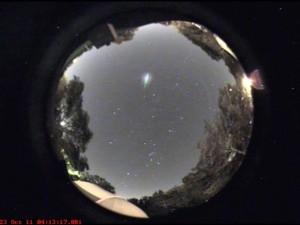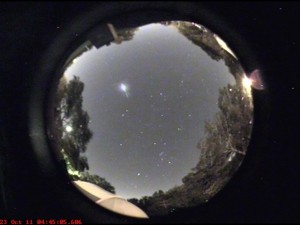Each year Earth passes through the dusty path that comet Halley takes through our solar system. In fact, Halley’s orbit and the Earth’s orbit intersect twice; once in early summer and once in the fall. As we pass through the dust trail, the small bits the comet leaves behind impact the atmosphere. The sand sized grains hit at roughly 148,000 miles an hour. Friction heats them to the point that they glow, and we see them as meteors.
The rendezvous in early summer produces the meteor shower known as the Eta Aquarids. That stream usually peaks about the 6th of May. The spot in the sky that they appear to come from is in the constellation Aquarius, is fairly low on the horizon and is only visible right before dawn.
The event more conveniently positioned for northern hemisphere viewers is the fall one. Since the meteors associated with Halley appear to come from near the constellation Orion, they are known as the Orionids. Like most meteor showers, the Orionids last a couple of weeks. The number of meteors slowly grow and peak about half-way through the time period. This year the peak of the Orionids was the evening of the 21st / morning of the 22nd of October.
I detected no Orionids with the All-Sky Camera the night of the 21st. I decided to try a different software package and it was able to capture two meteors on the morning of the 23rd. As you can see from the time stamp they were about 30 minutes apart which is also evident from the slight shift Orion has made in the sky during the intervening time.

